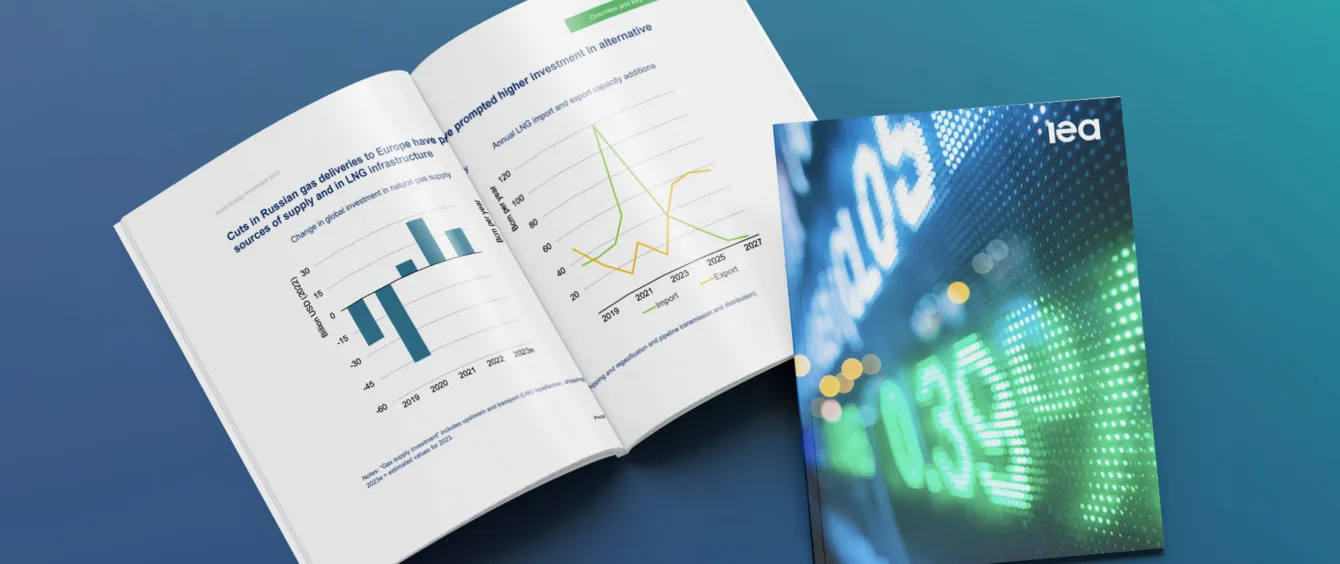The last year has been tumultuous for energy investment, according to the International Energy Agency’s (IEA) recently released World Energy Investment Report 2023.
Buffeted by the energy security demands emanating from the Ukraine crisis, more extreme weather events, inflationary and other supply chain pressures, and the need to accelerate the energy transition, many countries, particularly developing nations, have found themselves with less capital to invest.
However, there is undoubtedly good news. Spending on clean energy globally has been and remains on a strong upward trend since 2020. Having moved just over $1,200 billion in 2019, it is expected to exceed $1,700 billion this year, after exceptional growth in 2022.
Nonetheless, the other side of the coin is that spending on fossil fuels is also moving higher. High fossil fuel prices have returned profits to companies, which have increased investment levels in particular to address supply security concerns.
Spending on fossil fuels, while much lower now than on clean energy, fell sharply in 2020 in the midst of the Covid-19 pandemic, but has since risen each year to a level just short of the average between 2016-2019.
Balance has clearly shifted to clean energy
The IEA says clean energy investment in 2023 will be 24% higher than in 2021, while investment in fossil fuels will be 15% higher. For every dollar spent on fossil fuels, $1.7 will be spent on clean energy, up from a ratio of 1.1 five years earlier.
The report also notes that oil and gas companies are putting less as a percentage of overall spending into new supply. Instead, more of half of their spending has been directed to repaying debt, increasing dividends and engaging in share buy backs.
Only a fraction is being spent on clean technologies, the report shows, although the proportion is higher among the large European oil and gas companies.
Electrification gains ground
In the power sector, fossil fuel investment is flatlining, while investment in renewables and grids and storage is rising fast.
Another part of the jigsaw are increases in end-use investment in electrification, which shows a strong upward trend. Energy efficiency spending, meanwhile, after two good years, is expected to fall this year.
The data overall shows that the energy transition is being driven by power companies, like RWE, and transmission and distribution companies. Increased electrification is gradually shifting energy demand from fossil fuels to cleaner sources, powered by electricity.
The IEA calculates that, this year, investment in low emissions power is expected to account for almost 90% of total investment in electricity generation.
Energy transition challenges
The report charts many headwinds facing the energy transition.
Rising interest rates and higher raw materials costs have had an impact. Renewable energy projects are capital intensive, even if operating costs subsequently are very low. Higher borrowing costs are also expected to affect adversely the amount of venture capital invested in clean energy technology innovation.
Nonetheless, while clean energy costs edged higher in 2022 across the board, the primary technologies – solar, wind, and storage and electric vehicle batteries — remain very competitive, the IEA says.
Energy transition investment is highly concentrated in the advanced economies and in China, which together have accounted for more than 90% of the increase in clean energy investment since 2021. In fact, the IEA notes, the increase since 2021 in the advanced economies and China exceeds total clean energy investment in the rest of the world put together. The energy transition thus remains very uneven.
Nonetheless, there are other bright spots, for example, India, Brazil and some Middle Eastern countries, such as Oman, Saudi Arabia and the UAE, the report notes.
Despite the rising trend in grid investment, grid limitations are a constraint for renewable energy investment in many developing countries. Again, in this area, the advanced economies and China account for 80% of global spending and for almost all of the growth in spending in recent years.
The IEA also notes “widespread concern” that critical mineral investment will become a constraining factor for clean energy manufacturing and deployment.
Finally, the total level of clean energy investment still needs to accelerate significantly.
On the current trend, investment will rise to about $2.2 trillion dollars a year by 2030. Based on the IEA’s Announced Pledges Scenario, this could climb higher to $3.3 trillion.
However, to be in line with its ambitious Net Zero Emissions scenario, clean energy investment needs to reach $4.6 trillion by the end of the decade.
